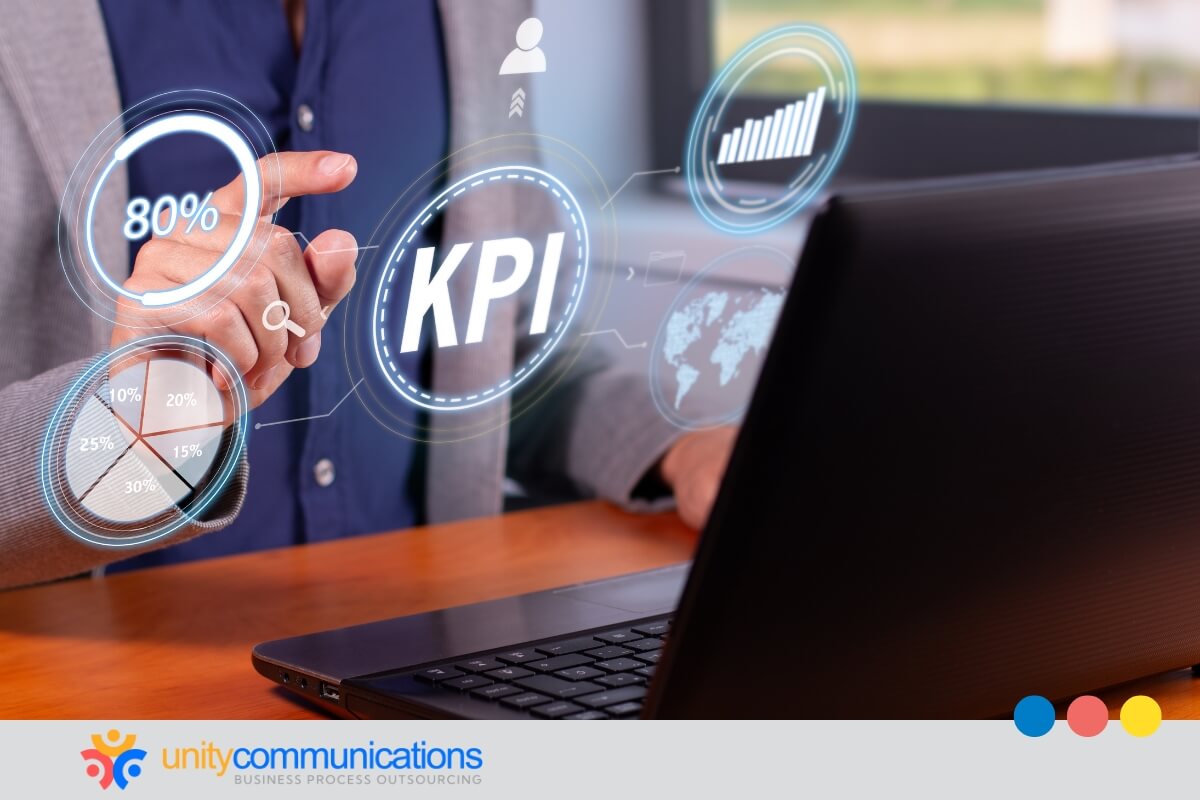Table of Contents
Time is one of the most valuable resources for any business. However, many are overwhelmed by repetitive tasks, administrative burdens, and non-core activities that drain productivity,
The solution? Strategic business process outsourcing (BPO). Companies can free up valuable time, enhance efficiency, and focus on growth by delegating specific functions to external experts.
This article explores how outsourcing can be a game-changer for time management. Keep reading to learn key time-saving strategies with outsourcing, including identifying tasks to outsource, selecting the right partners, and streamlining workflows to maximize productivity.
Time-saving strategies with outsourcing

Saving time is a constant challenge as companies juggle multiple tasks, manage complex operations, and strive to stay competitive. Many handle repetitive, time-consuming activities that divert focus from core activities and strategic growth initiatives. Reports show that small business owners spend 36% of their week on admin tasks.
Inefficient processes, lack of specialized expertise, and resource limitations further compound the struggle, leading to delays, missed opportunities, and decreased productivity. Time is a finite resource. Its management directly affects profitability, customer satisfaction, and business success.
What is BPO’s role in saving time? It allows businesses to delegate non-core functions to experienced outsourcing partners and free valuable time for innovation, customer engagement, and revenue-generating activities. BPO providers bring expertise, automation, and streamlined workflows that enhance efficiency while reducing operational burdens.
Here are time-saving strategies to employ with outsourcing:
1. Identify time-consuming tasks for outsourcing
Identifying tasks for BPO teams is a time-saving strategy with outsourcing to maximize efficiency. The first step is conducting a thorough audit of daily operations to pinpoint repetitive, labor-intensive, or non-core activities that consume excessive time. These tasks often include:
- Data entry
- Customer support
- Payroll processing
- IT support
- Administrative duties
By analyzing time logs, employee workload, and productivity reports, businesses can determine which processes are slowing down efficiency and would be more cost-effective if handled externally.
Another key factor in identifying tasks for outsourcing is assessing the level of expertise required. Suppose a job requires specialized skills not readily available in-house, such as digital marketing, software development, or financial analysis. In that case, giving it to external experts who can complete it faster and more accurately might be more efficient.
Additionally, consider outsourcing any function that diverts attention from core activities, such as strategic planning, innovation, or customer relationship management.
Lastly, evaluate tasks’ scalability and flexibility. Businesses can benefit from outsourcing to-dos that experience seasonal fluctuations or unpredictable workloads and require varying levels of workforce engagement.
By applying this time-saving strategy with outsourcing, companies can receive the needed support and avoid unnecessary costs during slower periods. Ultimately, outsourcing the right tasks allows businesses to streamline workflows, improve productivity, and allocate internal resources more effectively toward growth and innovation.
2. Choose the right outsourcing partners
Choosing the right BPO partner is another key time-saving strategy with outsourcing. The right service provider can reduce management overhead and enhance efficiency.
The first step is clearly defining business needs and objectives to align the outsourcing provider with the company’s goals. Businesses should look for teams with expertise in the specific tasks they need to outsource. A provider’s track record, industry experience, and client testimonials can offer valuable insights into their reliability and performance.
Communication and technology capabilities are also critical factors in selecting a BPO partner. A reliable outsourcing provider should have efficient communication channels, robust reporting systems, and the latest technology to streamline workflows.
Businesses should assess whether the provider offers robotic process automation (RPA), artificial intelligence (AI)-driven solutions, or cloud-based platforms that enhance productivity and reduce turnaround times. RPA can automate over 70% of rule-based tasks, minimizing disruptions while increasing overall efficiency.
Additionally, scalability and flexibility are critical considerations. The ideal outsourcing partner should be able to adapt to changing business needs, whether handling seasonal spikes in workload or scaling operations as the company grows. A strong emphasis on data security, compliance, and service-level agreements (SLAs) is also crucial to ensure reliability and accountability.
By applying this time-saving strategy with outsourcing, businesses can establish a strategic outsourcing relationship that saves time, enhances efficiency, and optimizes workflow management.
3. Establish clear goals and expectations
Setting goals and expectations is an essential time-saving strategy with outsourcing. It minimizes misunderstandings and accelerates project execution, making outsourcing more time-efficient.
The first step is defining the specific outcomes businesses expect from outsourcing, such as reduced turnaround times, improved service quality, or cost savings.
These objectives should be measurable and aligned with business strategies to ensure that the outsourcing arrangement contributes directly to productivity and growth. Clearly outlining the scope of work, key performance indicators (KPIs), and expected deliverables helps set a solid foundation for success.
Effective communication is another critical component of setting clear expectations. Businesses should provide detailed guidelines, standard operating procedures (SOPs), and performance benchmarks to help the BPO partner understand the required standards.
Regular meetings, progress reports, and feedback loops help align both parties and address issues before they hurt efficiency. A well-defined SLA that specifies response times, quality benchmarks, and escalation procedures promotes accountability and improves operations.
Finally, fostering a collaborative relationship with the BPO provider enhances efficiency and long-term success. Encouraging transparency, maintaining open lines of communication, and continuously reviewing performance help optimize processes over time.
4. Streamline communication
Another time-saving strategy with outsourcing involves streamlining collaboration and communication. Clear, structured communication helps the third-party team execute tasks correctly and promptly, minimizing misunderstandings and delays.
Establishing standardized communication channels, such as project management tools, real-time dashboards, and video conferencing, maintains transparency and alignment between internal teams and outsourcing partners.
Effective collaboration also requires well-defined roles and responsibilities. Businesses can avoid confusion and work redundancy by setting clear expectations for deliverables, deadlines, and escalation procedures. Cloud-based document sharing further enhances efficiency by enabling seamless information exchange and reducing manual follow-ups.
A well-coordinated approach allows internal and external teams to work efficiently, stay aligned with business goals, and drive success.
5. Monitor and evaluate outsourcing performance
Finally, monitoring and evaluating outsourcing performance is an essential time-saving strategy with outsourcing. The first step is establishing KPIs that align with business goals, such as response times, accuracy rates, cost savings, and customer satisfaction.
These metrics provide a clear framework for assessing the outsourcing partnership’s effectiveness. Regular performance reviews, audits, and real-time tracking tools help businesses stay informed about progress and identify areas for improvement.
Businesses should also leverage dashboards and analytics tools to gain real-time insights into productivity levels and workflow efficiency. By proactively monitoring operations, they can make data-driven decisions to optimize processes and eliminate bottlenecks.
Flexibility and continuous improvement are key to maintaining an effective outsourcing relationship. Businesses should be open to adjusting strategies, refining workflows, and implementing new technologies that enhance performance.
Encouraging collaboration and providing constructive feedback helps the BPO partner align more closely with company objectives. By applying this time-saving strategy with outsourcing, businesses can maximize efficiency, streamline operations, and ensure that outsourcing continues to deliver value in terms of time savings and productivity.
The bottom line

Companies can optimize their workflows and focus on strategic growth initiatives by outsourcing time-consuming tasks, choosing the right BPO partners, and setting clear goals. Effective communication and collaboration further enhance outsourcing success, ensuring processes run smoothly and deliver maximum value.
Time is a valuable asset, and leveraging BPO effectively can provide the competitive edge needed to stay ahead. By implementing these outsourcing strategies, businesses can achieve better time management, increase efficiency, and drive long-term success.
Ready to maximize your company’s efficiency and optimize time management with outsourcing? Let’s connect!




